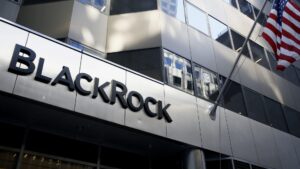Welcome to Extreme Investor Network, where we bring you unique insights and information to help you make the most out of your investing journey. Today, we are diving into a small tweak made by BlackRock that turned a quiet fund into one of the market’s fastest-growing active ETFs practically overnight.
BlackRock made a strategic move by adding the U.S. Equity Factor Rotation ETF (DYNF) to its target allocation model portfolio back in January. This decision sparked a massive influx of funds into the previously under-the-radar ETF, with over $2 billion pouring in just in the final days of January, and another $3 billion in net inflows in less than a week in March. The fund’s assets under management (AUM) quickly surged to nearly $7.7 billion, showcasing a remarkable growth trajectory.
This growth of DYNF highlights two key trends in the investing world – the rapid expansion of model portfolios and the increasing popularity of active exchange-traded funds. Model portfolios, offered by asset managers to investors and financial advisors, divide the portfolio into various asset buckets and invest in funds that align with those categories. The inclusion of active ETFs like DYNF in these model portfolios provides access to expert security selection and exposure to unique market segments.
But what sets DYNF apart from other funds? The fund aims to identify companies with strong historical performance factors, such as quality, size, and momentum, and adjust its exposure to these factors based on future performance expectations. For instance, the fund shifted its exposure to balance between expensive and value stocks in April, showcasing its dynamic approach to factor rotation.
While DYNF has outperformed some of BlackRock’s cheaper index ETFs over the past year, it’s important to note that active strategies often come with higher fees and increased risk. DYNF carries an expense ratio of 0.30%, compared to just 0.03% for popular index ETFs like IVV and ITOT. Additionally, the fund’s one-year beta suggests that it tends to move more than the broader market, leading to potential volatility.
As the landscape of active ETFs and model portfolios continues to evolve, investors must conduct thorough due diligence to understand the strategy and potential risks associated with their investments. It’s crucial to weigh the costs and benefits of active strategies, considering factors like performance history, expense ratios, and investment objectives.
At Extreme Investor Network, we aim to provide you with valuable insights and expert analysis to empower your investing decisions. Stay tuned for more exclusive content and in-depth market coverage to help you achieve your financial goals with confidence.


